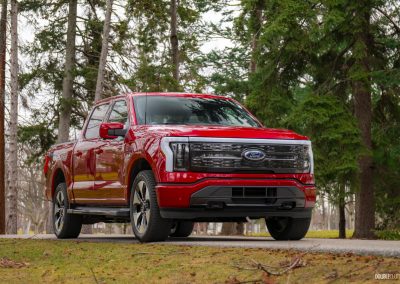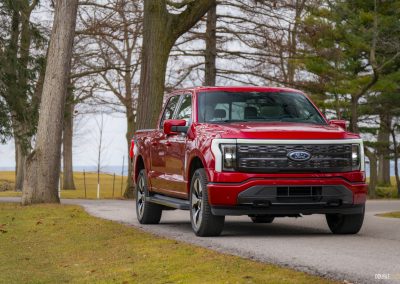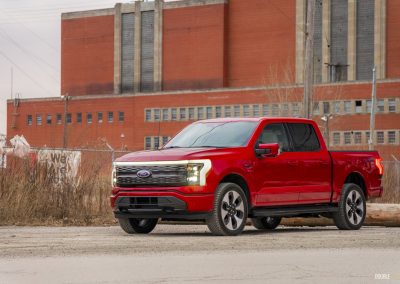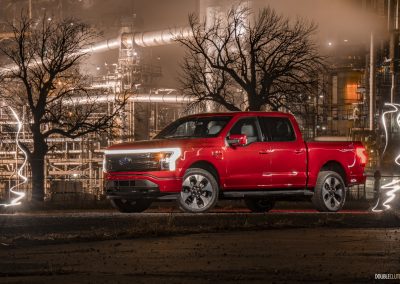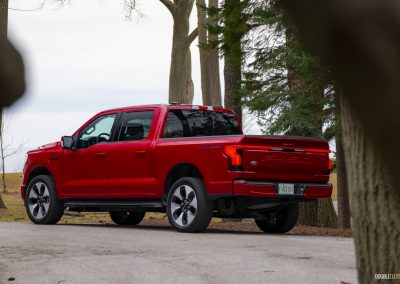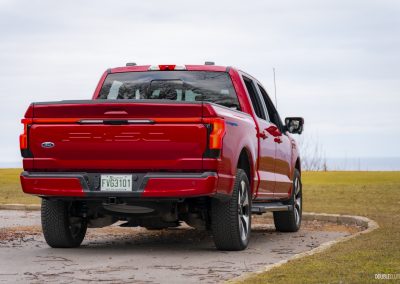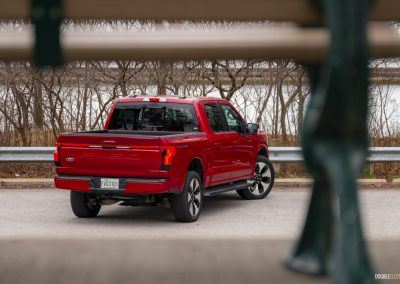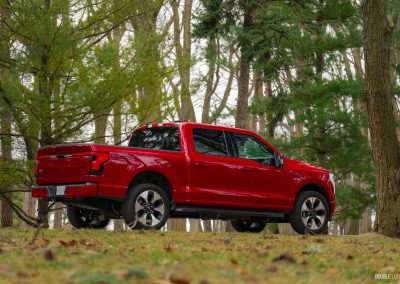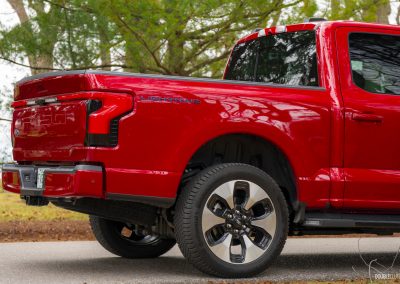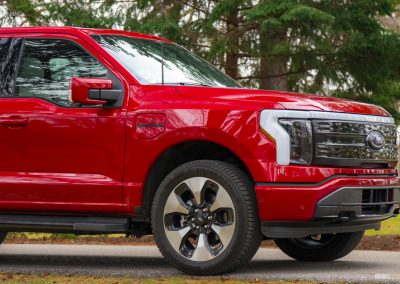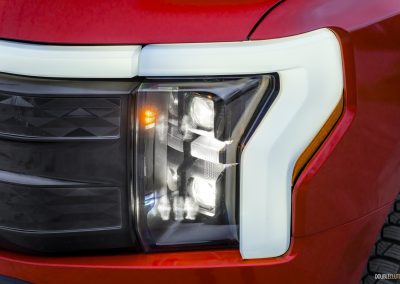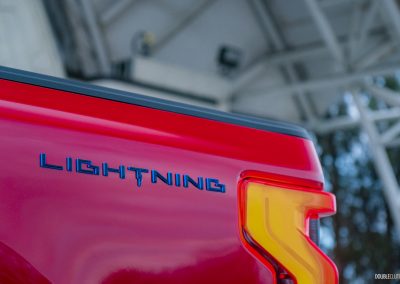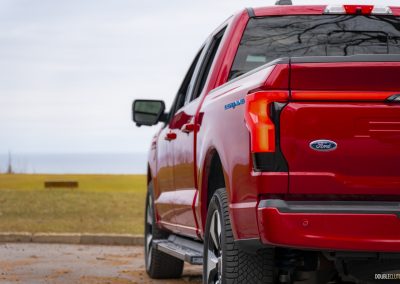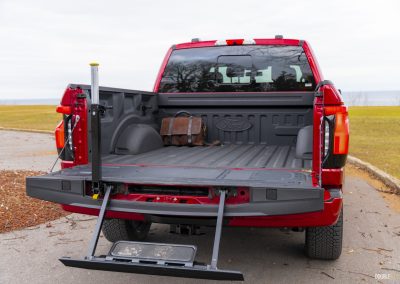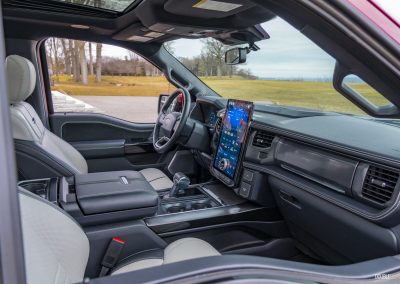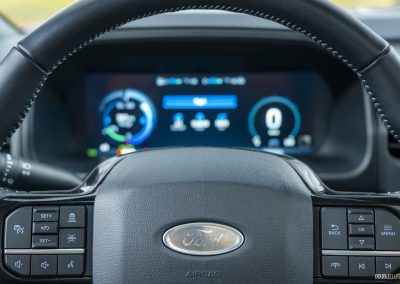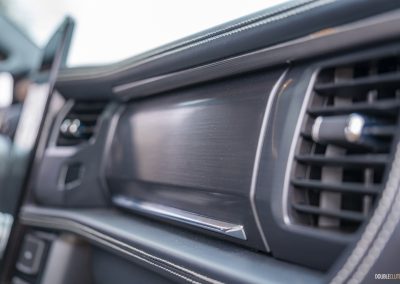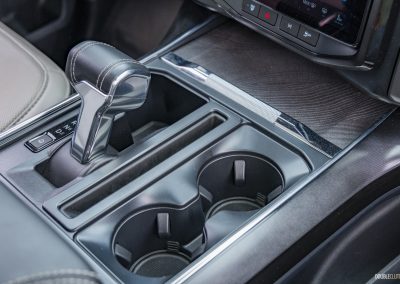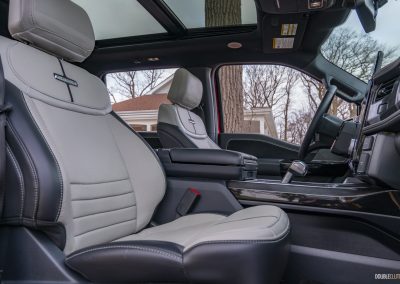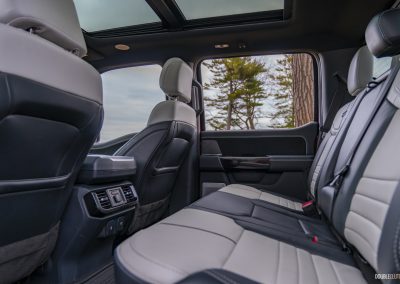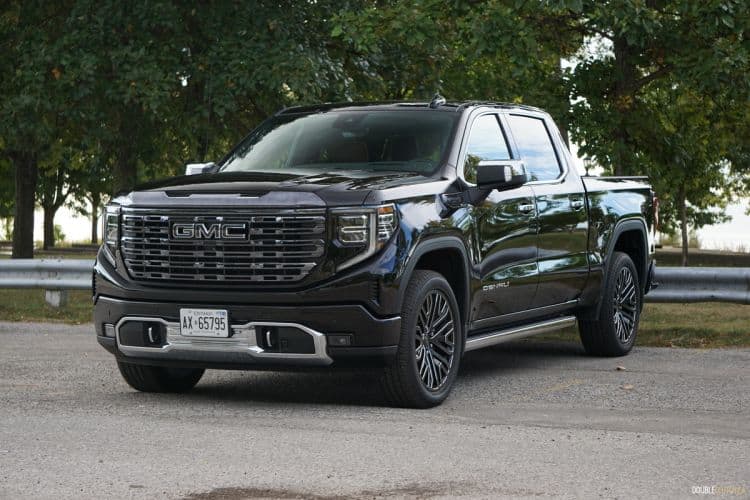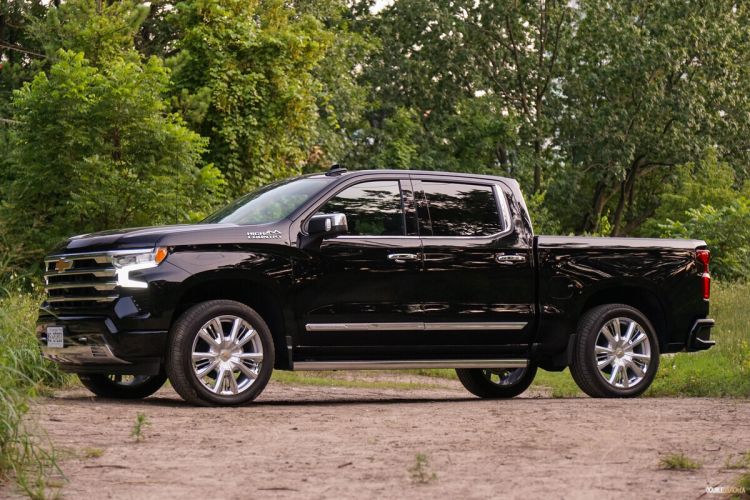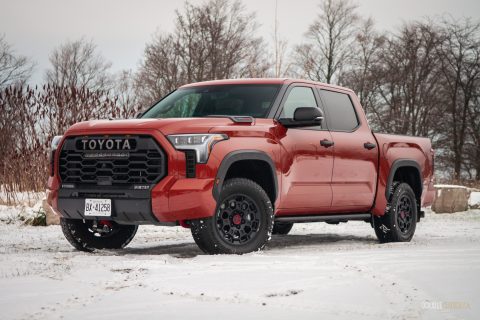I was sitting in the 2024 Ford F-150 Lightning Platinum at a “fast” battery charger, which was supplying about a third of its advertised “fast” output, when I caught myself thinking about how this truck was supposed to be the catalyst that made electric vehicles viable.
“This truck is going to change everything. It has capabilities that nobody else has ever seen. So even if you’ve been an F-150 owner for years, you’ve never experienced anything like [the] Lightning,” Ford CEO Jim Farley said during the Lightning’s reveal in April 2022. “[The] Lightning will change the way America works. People are going to love this truck. The next revolution in American manufacturing is here and it’s a Ford revolution.”
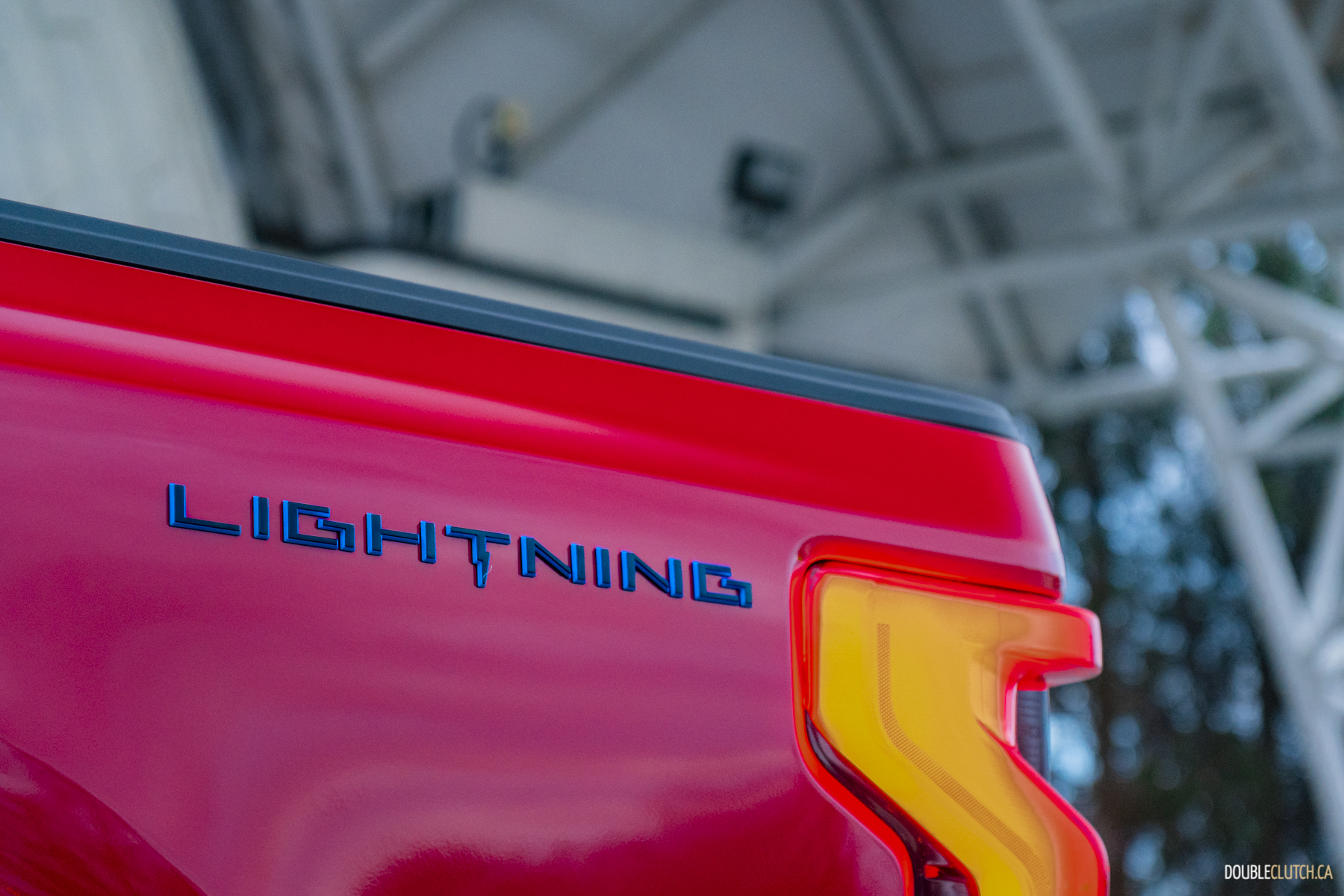
It’s amazing how fast things change. That wasn’t even two years ago, and it feels like all that optimism for EVs was from a different world that has since fallen apart. Tesla may have made a big splash with their bewildering Cybertruck reveal in 2019, but the blue-collar folks at Ford were going take reigns from the cool kids at Tesla, and make the farcical future of EVs a reality for real people. When Ford announced their own electric pickup truck, the F-150 Lightning, they talked a huge game — and in a curious twist of events, people bought it.
To be clear, they bought the hype, not the truck itself. The hype was wild; one of my friends, who is an engineer and even more cynical than I am, got the idea that the 518-kilometre max range was claimed with a full load, and would be significantly better unladen. People were saying that blackouts would be a thing of the past, as we could all power our homes with our trucks; speak not of where the trucks would get their power from. There were lots of lofty claims cropping up out of nowhere, and as is so often the case, with big hype comes big disappointment.
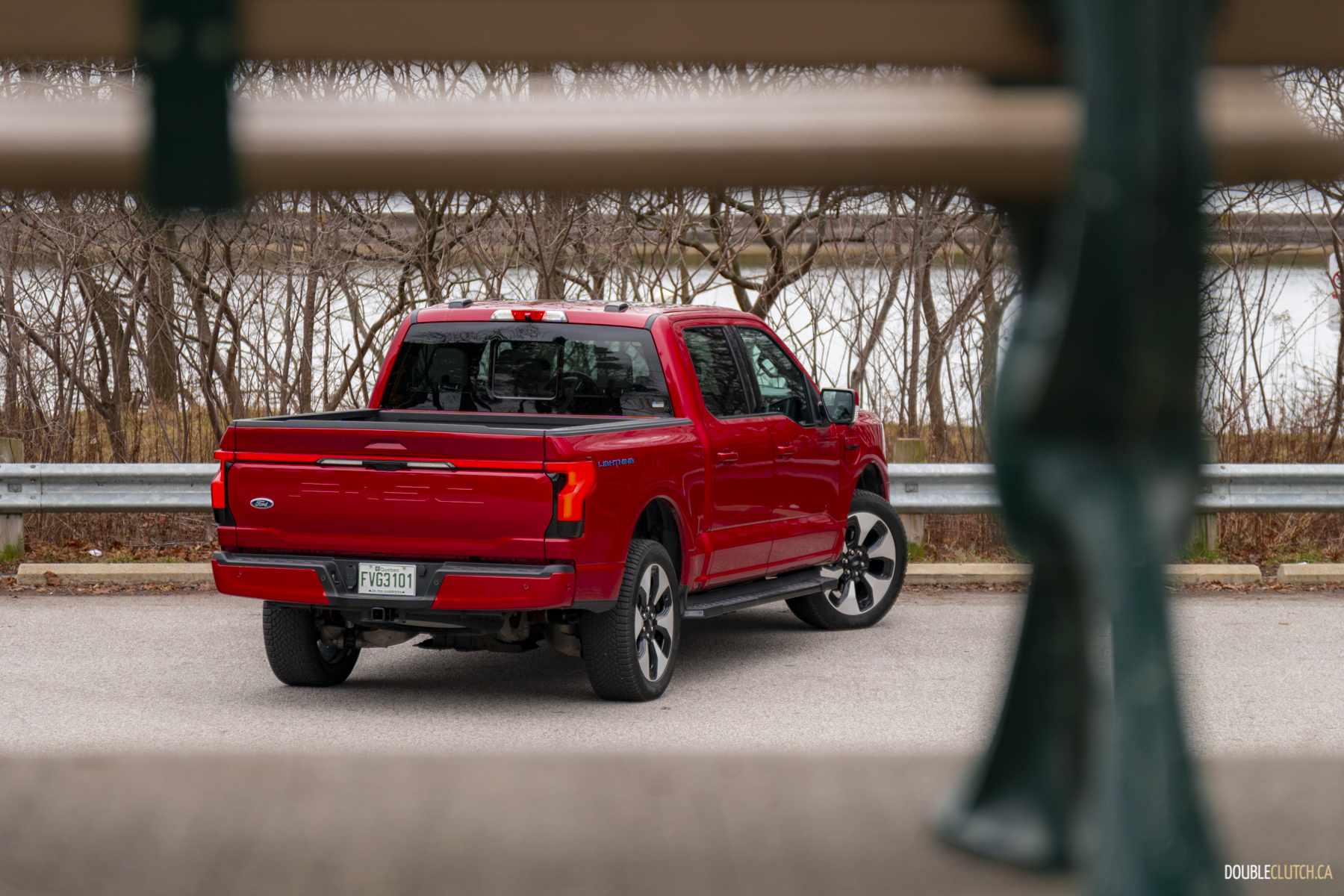
After the initial frenzy, sales have been … lacking. The retooled Rouge River plant, where Jim Farley made his original announcement, is operating about less than half of its capacity. The long-term sustainability of these behemoths is coming into question, the charging network hasn’t even come close to catching up to demand, and all EVs big and small are depreciating off a cliff. Many automakers, with Ford ironically being the among the loudest of them, are publicly walking back the lofty expectations previously paved for an electric path forward, in the face of collapsing profitability.
None of this is the Lightning’s fault. It’s honestly brilliant and objectively the best F-150 you can buy for the overwhelming majority of use cases. Unlike a lot of EVs that rub me the wrong way for being reminiscent of shallow, one-dimensional characters, the F-150 doesn’t suffer from losing its fuel-fired engines, only benefitting from substituting electrons in their stead. You might be inclined to bemoan the absence of thunder in a big, mighty pickup truck, but replacing it with tamed lightning is a hell of an upgrade.
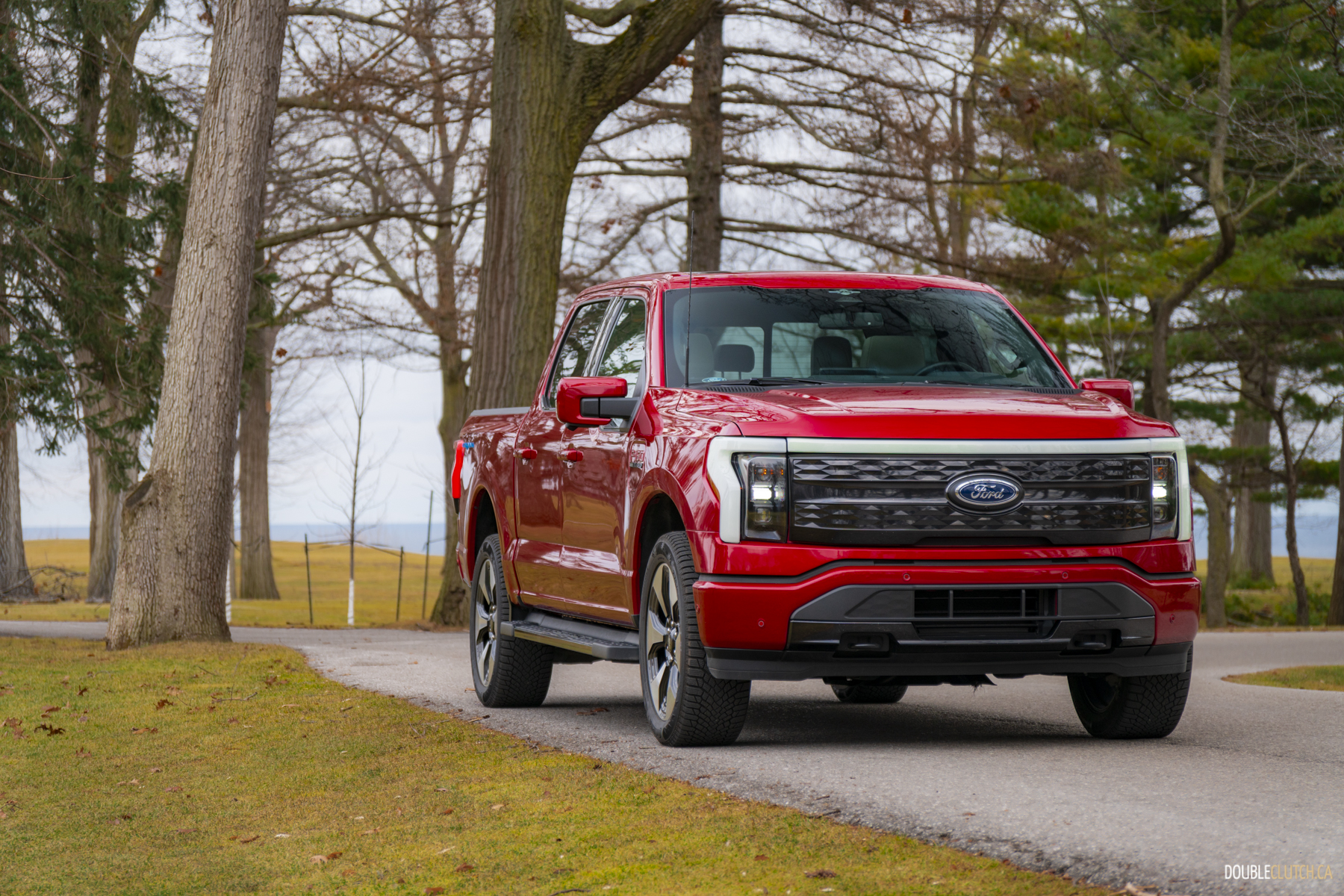
It may not sound like a good ol’ fashioned V8, but bear in mind Ford has been touting a non-traditional, twin-turbo V6 as its superior for years. Besides, if you ever feel insecure about the lack of a boisterous backing vocal, the Lightning’s 580 horsepower and 775 pound-feet of torque absolutely blows their doors clean off, anyway. It’s unendingly satisfying to know that your truck is one of the quickest vehicles on the road, in any weight class.
There’s more to it than that, though. The Lightning doesn’t feel like it’s a gizmo for tech bros; it just feels like a better truck in a lot of subtle ways that are hard to put into words — but that’s my job, so I’ll try. First, there’s no starting it. Just tap the button and go. Everything works immediately. No warm up, no waiting, no awkward cold-morning clunkiness. It’s ready to roll right now. It’s a small thing you wouldn’t normally think about, but you sure notice it when it’s gone.
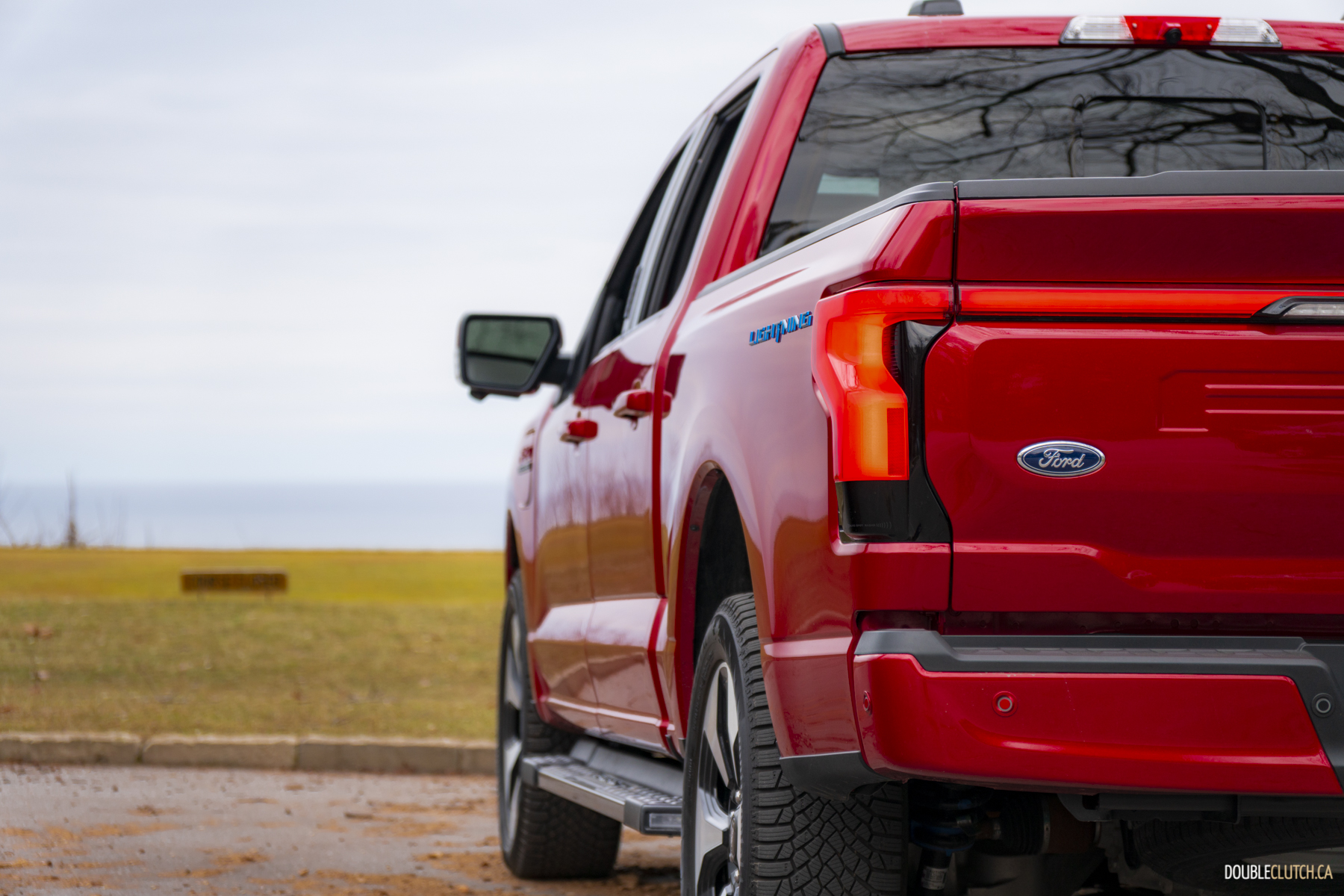
Most modern truck engines are outfitted with a raft of complicated life support systems in the name of saving fuel and reducing emissions. Between turbocharging, throttle-by-wire, and cylinder deactivation, all these things combine to make throttle response feel … off. It’s never been more apparent that your right foot isn’t actually connected to anything, that you’re more so requesting power and your engine then decides how it wants to fulfill that request, then coordinating with the eight- or nine- or 10-speed transmission as to what our best practices are for today — and then it’ll happen. Don’t get me wrong, it’s all impressive tech, but there’s more degrees of separation between you and your engine than you and Kevin Bacon. In the Lightning, that’s nullified. Throttle response is perfect, because it doesn’t have to think. It’s just a motor hooked up to a battery, and your foot is the dimmer switch. Turn it up more, and you get more, linearly and immediately, without kickdown shifts or spool time. An especially effective powertrain combo can give the impression that it’s never caught off-guard, but with an electric motor, it’s a mechanical impossibility for it to not be ready to respond.
And it doesn’t matter what the Lightning responds to, it can handle it. It’s obviously capable of being ridiculously quick if you’re in the mood, but that’s also useful for everyday situations like merging in hostile highway traffic, or towing. We tried towing a car on a trailer with the Lightning, and it felt like nohing was there. It smartly knocked down the estimated range as soon as it saw a trailer plugged in, and gently walked it back up as it saw it wasn’t that heavy, and ended up being a fairly accurate estimate.
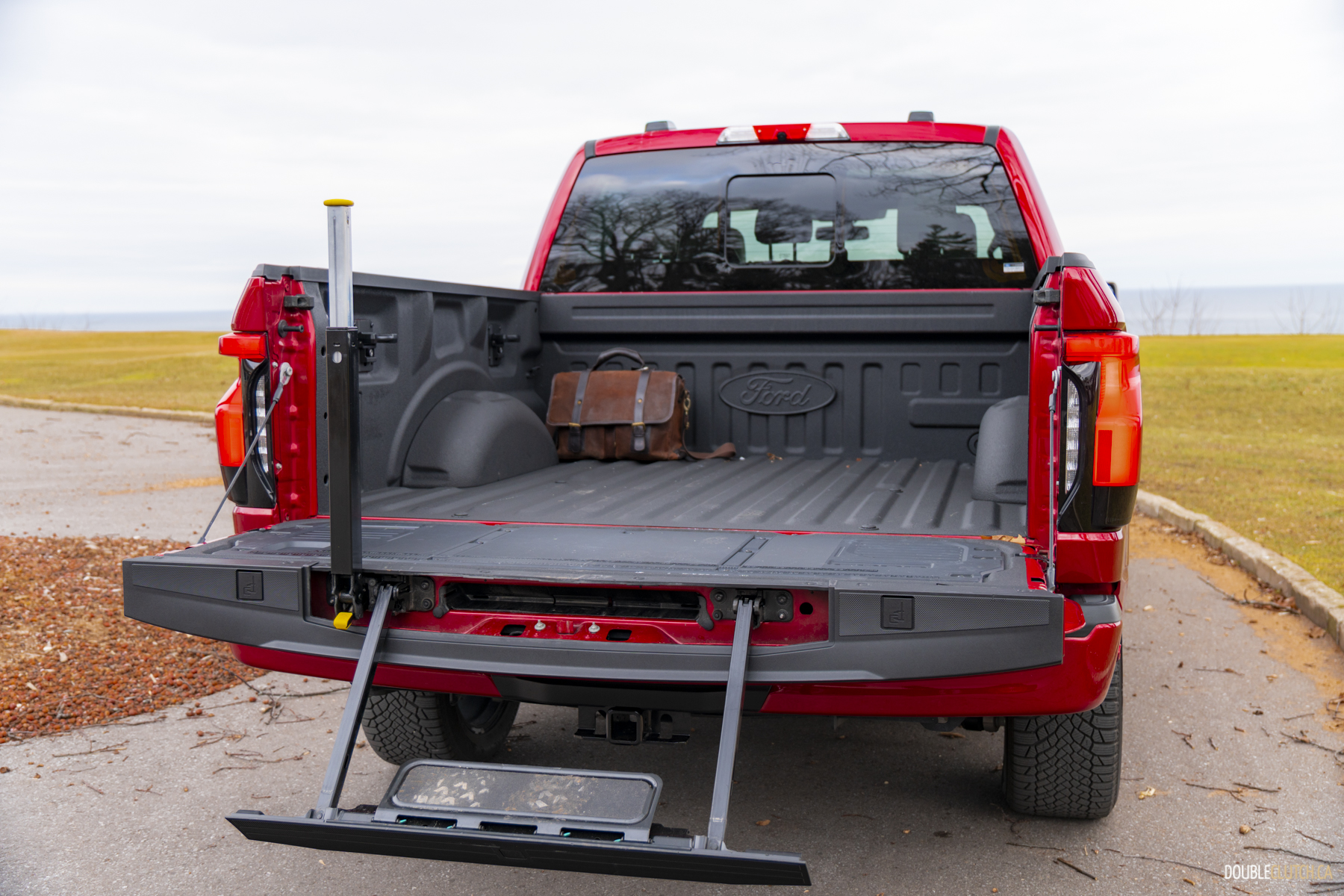
To be specific, a 165-kilometre round trip towing a 1,000-pound trailer both ways, plus a 2,500-pound car for the first leg, gobbled up about half the battery on a mild winter day. This has been a big sticking point for the Lightning and other new electric trucks, as they really struggle with towing. Struggle in the sense that, sure, they can do it quite effectively, but that sustained high-load through the electric motors absolutely murders the battery. This isn’t a great look, and has been a sizable knock against these rigs from the electric haters crowd, but it’s also an unfair criticism that totally overlooks the differences in how gas and/or diesel and electric motors use energy.
Case in point: it’s pretty well-known that if you’re buying a truck that you intend to do serious work with on a regular basis, you buy a diesel and that’s the end of it. This is because diesels, for all their drawbacks, are significantly more mechanically efficient than gassers, which really pays off under high load. So, if you buy a small-bore boosted gas truck and use it to tow a 10,000-pound trailer every weekend, no one’s going to feel bad when you complain about how much it’s struggling or the amount of money you’re spending on fuel. You chose the wrong tool for the job, and that’s nobody’s fault but yours.
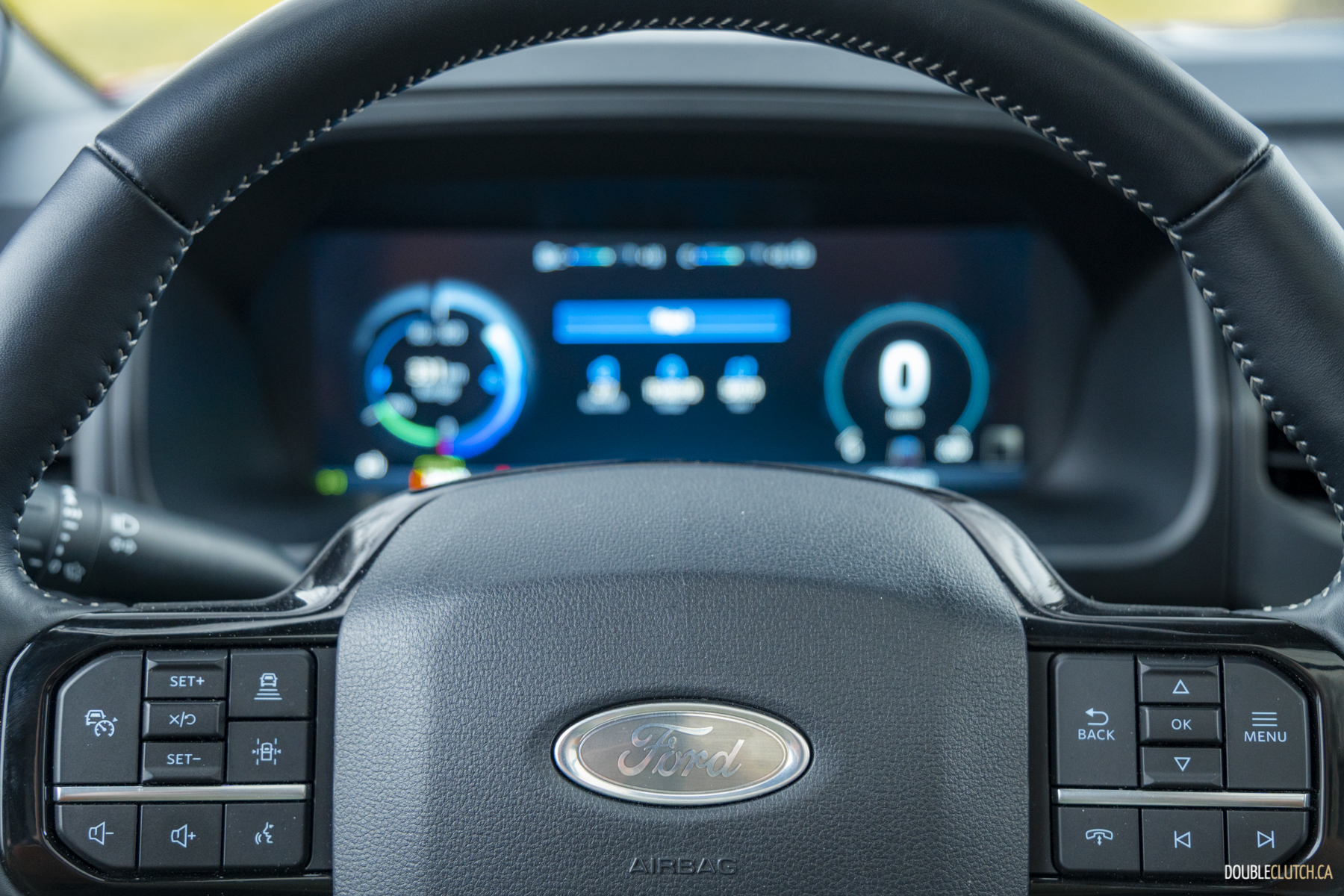
It’s this same reason why Ford’s heavy-duty gasoline engines are large-displacement V8s rather than the EcoBoost V6s they’re so proud of in the F-150. They’re significantly more efficient under load, with the substantial caveat that if you’re not using that load capacity, you’re wasting a huge amount of energy just keeping that engine turning at a red light, or taking off from said light. This is where the Lightning excels; it uses energy in an almost exact opposite way to what we’re used to.
It can sit all day powering its 18-speaker Bang & Olufsen sound system, heated and/or air-conditioned seats, a pile of USB ports and a wireless charging pad, and its myriad of 110 and 220 volt power outlets, all while using hardly any power. While sitting at a light, it uses nearly nothing. When putzing around in the city or stuck in stop and go traffic, the Lightning regenerates so much energy from stopping that it’s almost the same as just sitting. If you’re doing long-hauls on the highway with a persistent high demand from the motors, sure, the battery tends to fall off faster. But then maybe this isn’t the perfect tool for your task.
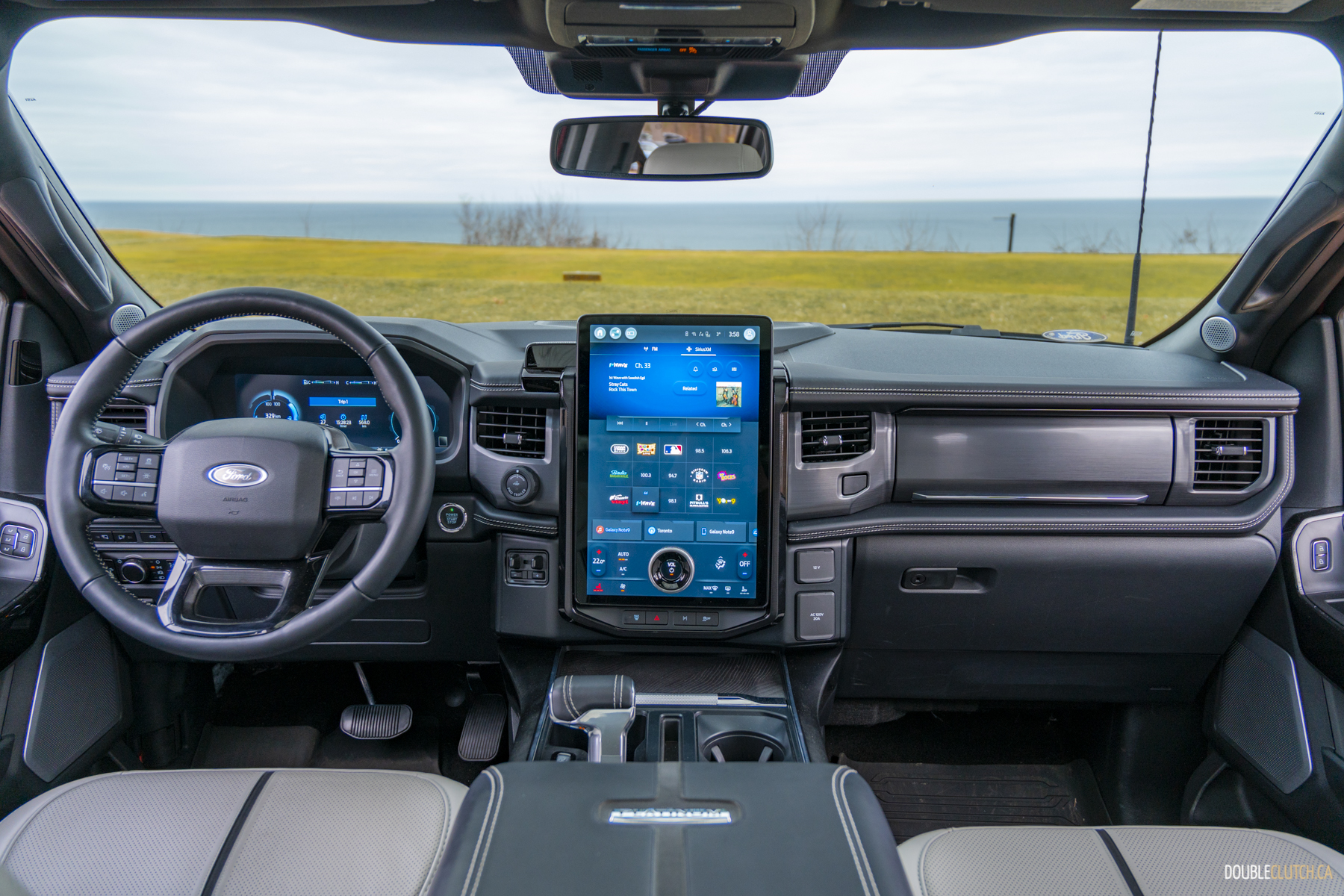
This isn’t to say you have to stay off the highway altogether, as the Lightning is quite happy sailing along on the open road for hours at a time. It’s uniquely comfortable over its own brethren and competitors thanks to a bespoke independent rear suspension design that helps the Lightning drive a lot better than you might think. Like most other EVs, it’s very quiet, and like most other F-150’s, the cabin is a commodious, well-thought-out place to spend time. I personally still don’t like the version of Sync displayed on Ford’s monstrous, portrait-oriented touchscreen, but it — along with wireless Android Auto and Apple CarPlay — work well enough. Ford’s BlueCruise hands-free driving system works very well, making this leviathan much easier to drive for hours at a time. I liked driving this rig a lot more than I thought I would; it didn’t feel like a novelty or a massive golf cart. It felt like an F-150. An excellent F-150.
So many people — myself formerly among them knock electric pickups for being incapable of “real” work, and yes, they do have their own set of weaknesses. But those weaknesses come with a lot of strengths that I really think makes a lot of sense for most applications — because let’s face it, a minivan could do what most people use F-150’s for just as well. But in a largely light-duty application, the 2024 Ford F-150 Lightning Platinum excels, and it’s more than capable of doing some heavy lifting if the situation calls for it. It may not be the best tool for every job, but it was a pretty perfect tool for everything I needed, and it’ll probably be the same for you.

